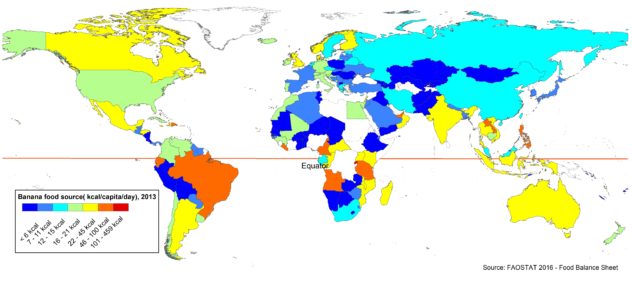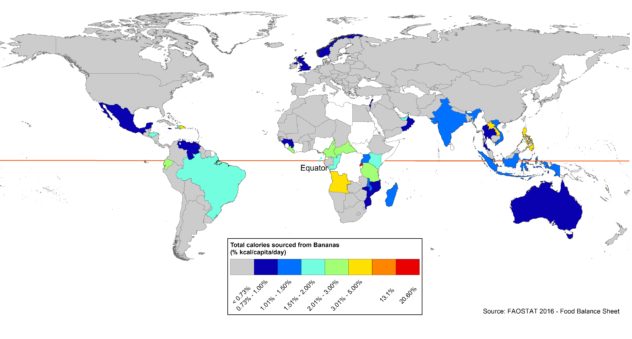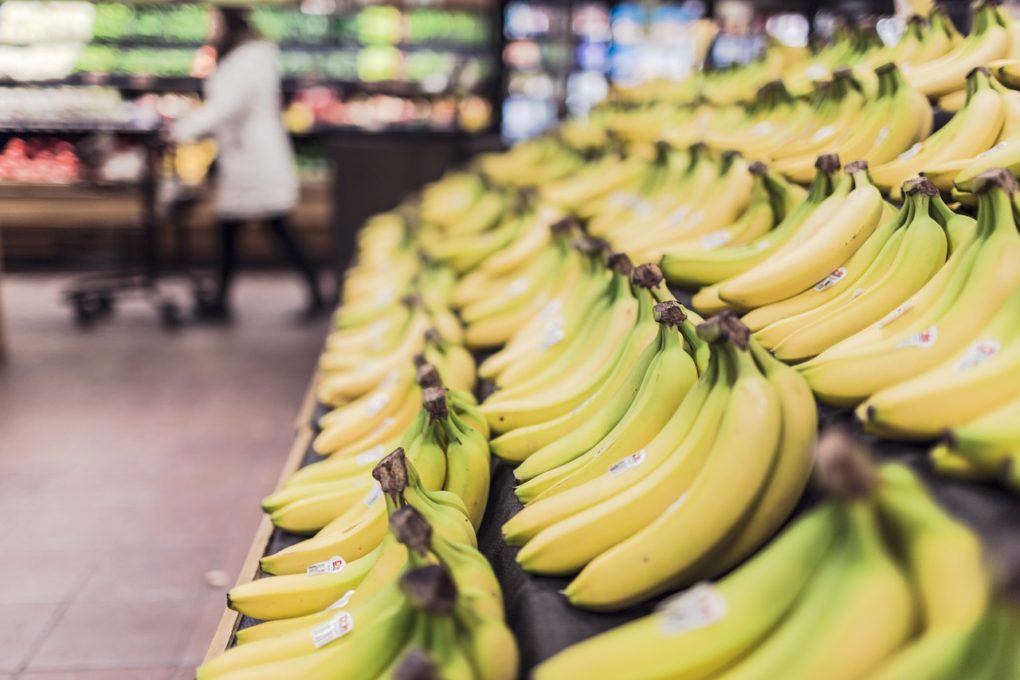The banana industry is facing the threat of disease which could dramatically impact production. Even with bananas being highly susceptible to disease, how important is a threat to the banana industry to consumers?
What’s at stake?
Bananas have been cultivated for millenniums, dating back to 8,000 BC. Since this time, bananas have spread across the tropical climates, producing 110 million tonnes in 2013. Fifty years ago the world’s banana production was only 19% of today. Much of the growth is due to exports of dessert bananas, yet only 18% of 2013’s production was exported. Why is that?
Nutrition and income
I always thought of bananas as a cash export crop, but this isn’t the case. Exports account for 18% of production, the remaining 82% is consumed locally/domestically. Less developed nations consume 13% of global production, and 40% is consumed within income-food deficits countries. Countries growing bananas have become dependent on it as a source of food and income. For those populations, bananas offer a healthy and inexpensive source of fibre, carbohydrates and micronutrients. This starchy fruit is a critical food to 500 million people, particularly in the least developed countries. According to the CGIAR, bananas and plantains make up more than 25% of food energy for ~70 million Africans.
Staple food
Banana are a staple food for millions due to their nutrition and relatively low cost to produce. The average consumption (in 2013) is 12.28 kg of bananas a year, which would be like everyone eating 1 Cavendish banana every 5.4 days. A number of nations eat bananas more frequently, Rwanda being the most dependent on bananas consumes 280 kg/capita/year (~4.2 Cavendish bananas each day). For a country like Rwanda, a threat to the banana is a threat to their means of living as bananas account for 20% of their food calories in 2013.


So long banana?!
Global populations are dependent on bananas as a supply of food and income, however, the prevalence of diseases are threatening the banana industry. Prior to the 1950s, the most exported variety was the Gros Michel banana; until a fungal disease known as Fusarium Wilt (aka Panama Disease or TR1) spread throughout the Central American banana producers, devastating the export industry. Fortunately, the market recovered thanks to the Cavendish variety which is immune to the strain of Fusarium.
Presently Tropical race 4 (TR4), a strain of the Fusarium Wilt is threatening Cavendish bananas. There’s no simple preventative measure of fungicide or fumigants to reduce or eliminate the spread of TR4. The industry feels the best way to avoid future and continuous negative impacts are by replacing susceptible cultivars with resistant ones. To do so would require plant breeding research and biotechnology.
TR4 is not the only disease to put the staple food at risk, Black Sigatoka (Black leaf streak: BLS) also threatens the banana industry. This fungus attacks the leaf, drastically reducing yields and causing premature ripening. While BLS is controllable by chemicals, it is expensive to apply. Biotechnology could be a solution to help decrease the spread of the disease and reduce the potential for chemical resistance to the disease.
Currently, it’s the banana export market that faces the greatest risk from diseases, which over time could spread to devastate domestic and traditional banana production. Right now breeders are racing against the clock to protect this staple food. For our sake and the millions diet dependent on bananas, let’s hope science can beat the clock.


